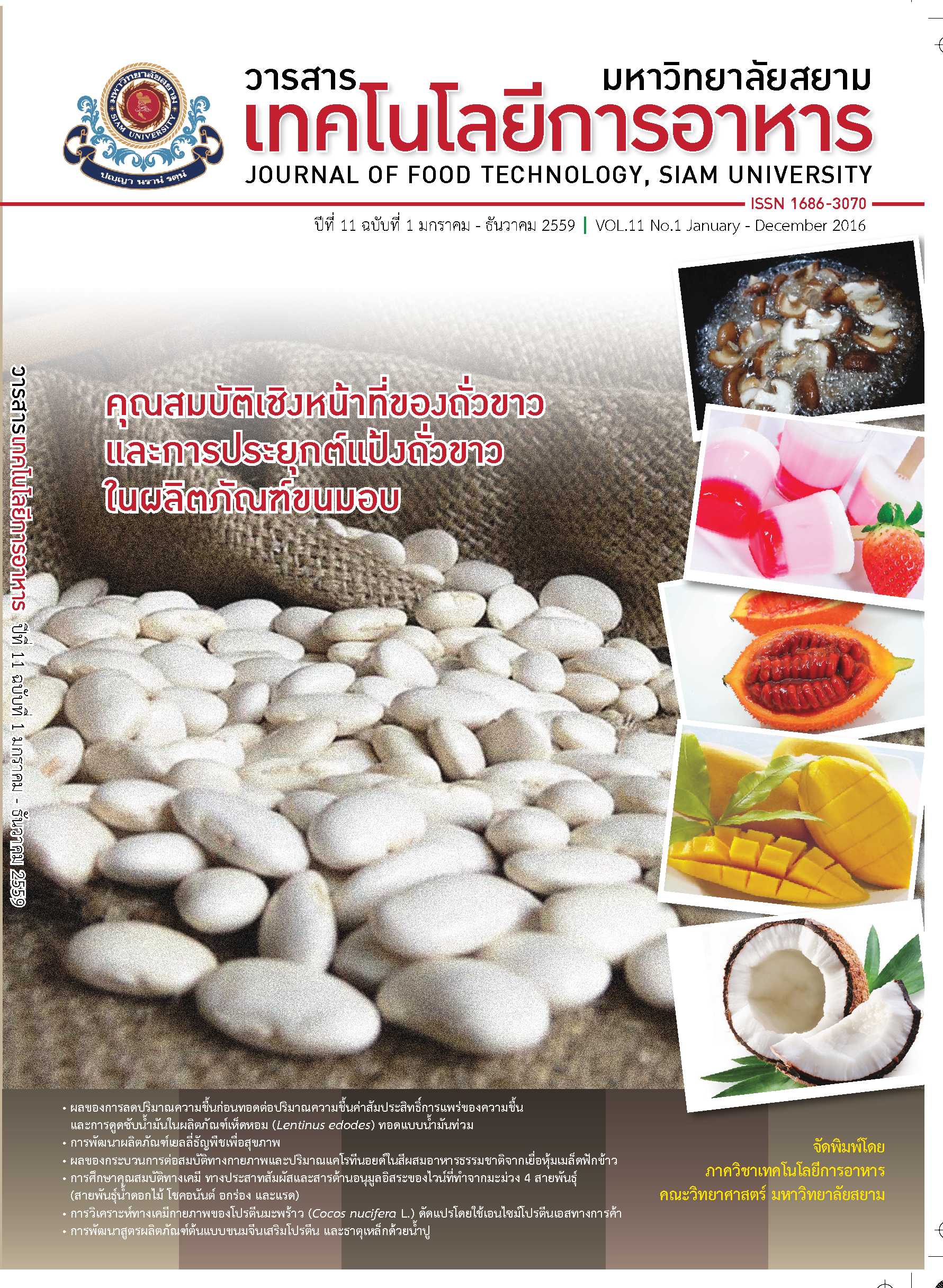Physicochemical Analysis of Modified by Commercial Proteinases Coconut (Cocos nucifera L.) Protein
Main Article Content
Abstract
The by–products of coconut skim milk and solid substances from virgin coconut oil production were used to produce coconut protein concentrate (CPC) and modified coconut protein concentrates (MCPs) using Alcalase and Flavourzyme. In this study, the physicochemical properties and pH-dependent solubilities of CPC and MCPs according to the degree of hydrolysis (DH) at 8 to 14% were compared. Each enzymatic hydrolysis was found to change the intensity of ATR-FT-IR spectra and surface morphology of MCPs leading to improved antioxidant activity, surface activity at water-air and water oil interfaces and solubility. MCPs from Alcalase modification showed higher antioxidant activity and superior surface activity but a lower protein solubility than MCPs from Flavourzyme reaction. MCPs modified using Alcalase at DH 8% showed the best antioxidant activity and surface activity among all samples. These results suggest that MCPs from Alcalase reaction at limited DH could be used as a potential health promoting ingredient with antioxidant and emulsifying activity in foods.
Article Details
How to Cite
Thaiphanit, S., & Anprung, P. (2016). Physicochemical Analysis of Modified by Commercial Proteinases Coconut (Cocos nucifera L.) Protein. Journal of Food Technology, Siam University, 11(1), 21–37. retrieved from https://li01.tci-thaijo.org/index.php/JFTSU/article/view/68899
Section
บทความวิจัย (Research Articles)
Copyrights of all articles in the Journal of Food Technology available in print or online are owned by Siam University and protected by law.


